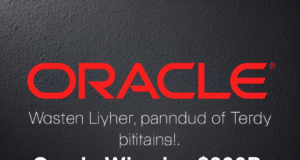Microsoft and Corning are teaming up to supercharge Azure with a revolutionary technology: Hollow Core Fiber (HCF). This isn’t just another incremental improvement; it’s a game-changer that promises to reshape how we experience the cloud, especially for AI.
Corning’s Hollow Core Fiber: Expanding Microsoft Azure
This partnership, announced by Microsoft in a recent blog post, involves Corning’s North Carolina facilities ramping up production of Microsoft’s HCF. This isn’t just about manufacturing; it’s about building the backbone of a faster, more efficient, and more scalable future for Azure. Think of it as upgrading the internet’s plumbing to handle the ever-increasing flow of data—especially the data-hungry behemoths of AI.
Why is this such a big deal? Traditional fiber optic cables rely on glass strands to transmit data. HCF, however, uses a hollow core, dramatically reducing signal loss and enabling longer distances without amplification. This translates to lower latency—meaning faster response times—and increased bandwidth—meaning more data can be transmitted simultaneously.
For Azure customers, this means significant improvements in the performance of cloud-based applications and AI workloads. Imagine the possibilities: faster AI model training, near-instantaneous data retrieval, and seamless collaboration across vast distances. This is the kind of infrastructure needed to support the exponential growth of AI and the demands of future technologies.
The Power of Partnership: Corning and Microsoft
Corning’s involvement is crucial. Their extensive experience in fiber optic technology and scalable manufacturing capabilities are perfectly aligned with Microsoft’s ambition to deploy HCF globally. This isn’t just a manufacturing deal; it’s a strategic partnership built on mutual innovation. Corning’s 55-year legacy in fiber optics provides the expertise needed to tackle the challenges of large-scale HCF production.
The collaboration extends beyond manufacturing. Corning is working directly with Azure engineers to optimize manufacturing processes, ensuring continuous improvement in yield, performance, quality, and reliability. This collaborative approach is key to achieving the volume and speed required for widespread HCF deployment across the Azure network. They are also collaborating on developing next-generation manufacturing platforms, ensuring that the infrastructure keeps pace with technological advancements.
Addressing the Challenges of Scalability
Deploying a technology like HCF at scale presents significant challenges. One key hurdle is the need for specialized equipment and expertise. Corning’s role in providing not only the fiber but also the necessary cable and connectivity products for an end-to-end solution within Azure’s network environments is critical to overcoming this hurdle. Another challenge is ensuring consistent quality control across massive production runs. The partnership between Corning and Microsoft mitigates this risk through rigorous quality control measures and ongoing collaboration.
The Future of Cloud Networking: A Glimpse Ahead
The implications of this partnership extend far beyond Azure. HCF technology has the potential to revolutionize global internet infrastructure. Imagine a world with significantly reduced latency for everyone, unlocking new possibilities for remote work, telemedicine, and online education. The speed and efficiency gains from HCF could spur innovation across various sectors, from finance to healthcare.
This collaboration between Corning and Microsoft is a testament to the power of strategic partnerships in driving technological innovation. It’s a bold step towards a future where the cloud is not just faster and more efficient, but also more accessible and responsive to the demands of a rapidly evolving world. The future of AI and cloud computing is being built today, one strand of hollow core fiber at a time.
What are your thoughts on the impact of Hollow Core Fiber on the future of cloud computing? Share your insights in the comments below!





